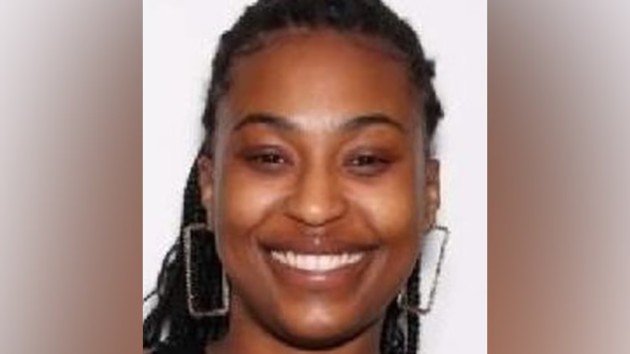Former LAPD detective who murdered her ex-lover’s wife, hid crime for decades remains behind bars
Written by ABC Audio ALL RIGHTS RESERVED on October 4, 2024
(LOS ANGELES) — The former Los Angeles police detective convicted in 2012 of killing her ex-lover’s wife was denied parole on Wednesday in the 1986 murder and will continue to serve her 27 years-to-life sentence.
Stephanie Lazarus was convicted of murdering Sherri Rasmussen, a 29-year-old hospital critical care nursing director, who was shot three times in the home she shared with her husband, John Ruetten.
Lazarus was sentenced to 27 years to life after a jury found her guilty of first-degree murder. She became eligible for parole in 2023 after the state of California passed a law giving special consideration to youthful offenders who had committed their crimes when they were under the age of 26.
Lazarus was 25 at the time of the murder.
Commissioner Garland stated that the board had “found good cause to rescind Lazarus’ parole” and would reconvene for further hearings regarding Lazarus.
There will be another chance for parole. Lazarus will be set for another suitability hearing within 120 days.
“The Killer Down the Hall,” a new “20/20” airing Friday, Oct. 4, on ABC at 9 p.m. E.T. and streaming the next day on Hulu, features the story of Stephanie Lazarus, including interviews with the victim’s family and friends.
“It’s definitely, uh, pound for pound, one of the greatest true-crime stories of all time,” Mark Groubert, a journalist who wrote a feature on Lazarus’ LAPD unit for L.A. Weekly, told “20/20.”
Ruetten and Lazarus met at UCLA in the 1970s and had a friendly relationship that involved casual sex, according to Ruetten’s testimony at Lazarus’ trial. Ruetten also testified that he never considered Lazarus his girlfriend. He also admitted to sleeping with Lazarus shortly after becoming engaged to Rasmussen. On Feb. 24, 1986, Ruetten discovered his wife lying in a pool of blood on the living room floor of their condo in Van Nuys, California. He immediately called 911.
The original investigators determined the crime scene at the home that Ruetten and Rasmussen shared showed all the signs of a “hot prowl,” a term police use to describe a home invasion. Investigators strongly believed that Rasmussen was the victim of a burglary that escalated into her murder. She had ligature marks on her wrist, indicating that, at some point, someone had tied her up. She also had three gunshot wounds to her chest, along with a bite mark on her arm.
On the night of the murder, LAPD Homicide Detective Lyle Mayer questioned a very emotional John Ruetten about what he knew regarding the day Sherri was killed.
Ruetten denied killing his wife and agreed to undergo a polygraph examination, but the results came back inconclusive. However, he had a rock-solid alibi, according to the Rasmussen family attorney.
“He was at work that day,” John Taylor, the attorney, said. “He had left work. He had stopped to pick up his dry cleaning and then came back between 6:00 and 7:00 p.m. and found his wife murdered in the living room area of the house.”
In the eyes of Mayer, the lead detective, Ruetten was a grieving husband. Investigators said they didn’t feel he was hiding anything, and as far as they were concerned, he was not a suspect — and they told him so.
“I believe your house was burglarized today,” Mayer told Ruetten in the interrogation room. “Once those persons, or that person, or whoever was inside, I believe they were trying to steal your stereo and probably some other items.”
Not long after Rasmussen’s murder, investigators quickly pursued a new lead. Another burglary with a similar M.O. occurred in the same Van Nuys neighborhood.
A woman interrupted the burglary when she came home and found two men in her house, one of whom was armed. They fled, and witness sketches of the suspects were created. Even though the LAPD had these new suspects, there was no evidence directly tying anyone to Rasmussen’s murder. Sherri’s family and friends believed the motive to be personal. Her father, Nels Rasmussen, says he urged the police to investigate a disgruntled nurse Sherri had worked with, as well as Ruetten’s former lover, Stephanie Lazarus, whose name Rasmussen never knew. But the detectives continued to focus solely on the burglary theory.
At this point, detectives said they did not have a single witness, fingerprints, or murder weapon.
The case went cold until 2001, when the Los Angeles Police Department launched the LAPD’s Cold Case Unit. That year, detectives were given more than 9,000 unsolved murders spanning more than two decades, and Rasmussen’s case was one of them.
With new technology and a fresh set of eyes, cold case investigators took another look at the bite mark that was on Rasmussen’s forearm.
Detective Cliff Shepard was the lead officer who investigated the Rasmussen case for the unit.
“Up to that point, nobody else had looked at it other than Mayer and myself, really,” Shepard said. “When I was going back over the reports, they indicate that a bite swab had been collected,” Shepard said. “And when I looked at the evidence… no evidence for a bite swab. So, I checked with our property, they verified they did not have the swab booked with our evidence room. There’s no record of it.”
Shepard sought assistance from Jennifer Francis, a criminalist at the LAPD’s Scientific Investigation Division, to locate the swab, which she traced to a freezer at the L.A. County Medical Examiner’s Office.
The swab was sent out to forensics for analysis, which returned a DNA profile of an unidentified female but returned no match in law enforcement databases.
The DNA had given police a profile, but it did not provide a name. Even with this new information, the investigator’s theory remained that Sherri’s killer or killers were burglars. By 2005, Shepard had moved on from the Rasmussen cold-case investigation without identifying a suspect, even with the DNA profile.
“My biggest regret is not interviewing Ruetten. Not meeting with him and having a face-to-face,” Shepard said.
The case went cold until 2009 when Detective Jim Nuttall from the Van Nuys division took over the investigation with a fresh set of eyes.
One of the first things Nuttall noticed was the four-year-old DNA report by Francis indicating that a woman was present at the murder. He also thought the stereo equipment stacked by the door was suspicious, leading him to question the burglary theory.
After going back to speak with Sherri’s family and Ruetten, Nutall and his team of investigators compiled a list of five female suspects who were in Rasmussen’s orbit. Three of the five were immediately eliminated – Rasmussen’s sister, mother, and her close friend –after submitting DNA samples. The fourth suspect, a nurse with alleged tension with Rasmussen at her job, also was eliminated.
The fifth suspect was Stephanie Lazarus, Ruetten’s ex-lover from college. Ruetten told Detective Nuttall that he had already given Lazarus’ name to the LAPD 23 years ago. The conversation, however, was never documented.
Four months after reopening the Rasmussen case, Nuttall did something no other officer investigating Sherri’s murder had done: He took a hard look at Lazarus.
The decision was made to have a special surveillance unit follow Lazarus to observe her and obtain a DNA sample. After following her, the unit noticed she had thrown a cup away in a public trash can. They recovered the cup to test the DNA against that from the bite mark.
The DNA matched the bite mark on Rasmussen, providing detectives with the evidence they needed to arrest Lazarus. Lazarus was charged with Sherri’s murder and pleaded not guilty.
In February 2012, 26 years after the murder of Rasmussen, Lazarus stood trial at a courthouse in downtown Los Angeles. She was convicted of first-degree murder and sentenced to 25 years to life and an additional two years for the use of a firearm.
After her conviction, Lazarus continued to profess her innocence but changed her story in 2023 when she became eligible for parole.
“The only reason she confessed is because she wants to get out on parole,” Teresa Marie Lane, a sister of Rasmussen, said. “We really have to keep her in because she has no regard for what she did. She does not have remorse.”
Copyright © 2024, ABC Audio. All rights reserved.







